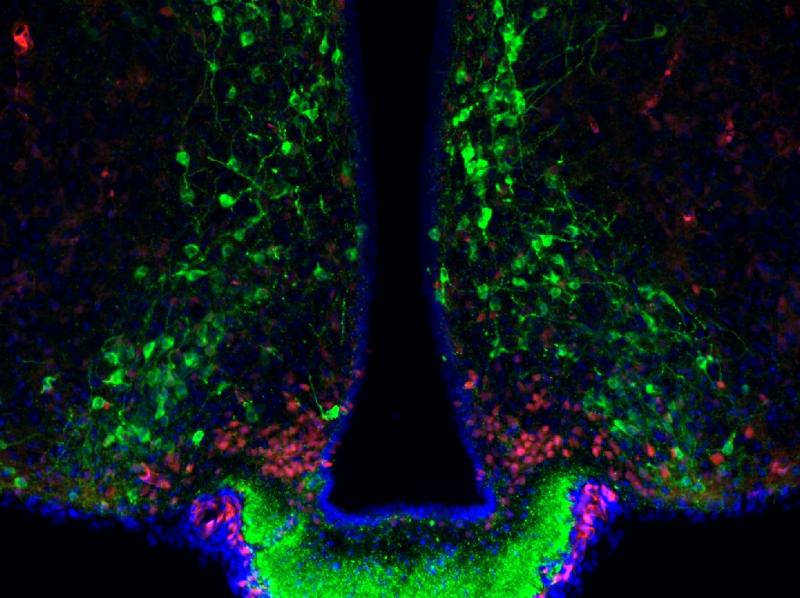Two complementary and interacting neuronal circuits govern food-seeking: the homeostatic and hedonic pathways. Homeostatic feeding is driven by deficits in energy stores. In contrast, hedonic or reward-based feeding occurs when highly palatable foods are consumed even during periods of energy surplus. The neurocircuitry governing the communication between these two pathways and their downstream convergence points have not been elucidated. We recently demonstrated that the activation of a unique subpopulation of neurons in the Arc induces rapid and robust feeding and could be this missing link. Chronic activation of these neurons leads to significant weight gain. We currently are validating the source of the inputs to these neurons and seeking to identify their downstream targets. Our findings will determine whether this population of neurons provides one of the convergence points between the hedonic and homeostatic feeding neurocircuits.
Dopamine production in neurotensin receptor 1 neurons is required for diet‐induced obesity and increased day eating on a high‐fat diet F Farahmand, M Sidikpramana, AR Gomez, LJ Rivera, JR Trzeciak, ... Obesity
Food-induced dopamine signaling in AgRP neurons promotes feeding Q Zhang, Q Tang, NM Purohit, JB Davenport, C Brennan, RK Patel, ... Cell reports 41 (9)
Local Drd1-neurons input to subgroups of arcuate AgRP/NPY-neurons SR Chadwick, AD Güler iScience 25 (7)
Long-term high fat diet consumption reversibly alters feeding behavior via a dopamine-associated mechanism in mice E Altherr, A Rainwater, D Kaviani, Q Tang, AD Güler Behavioural brain research 414, 113470
